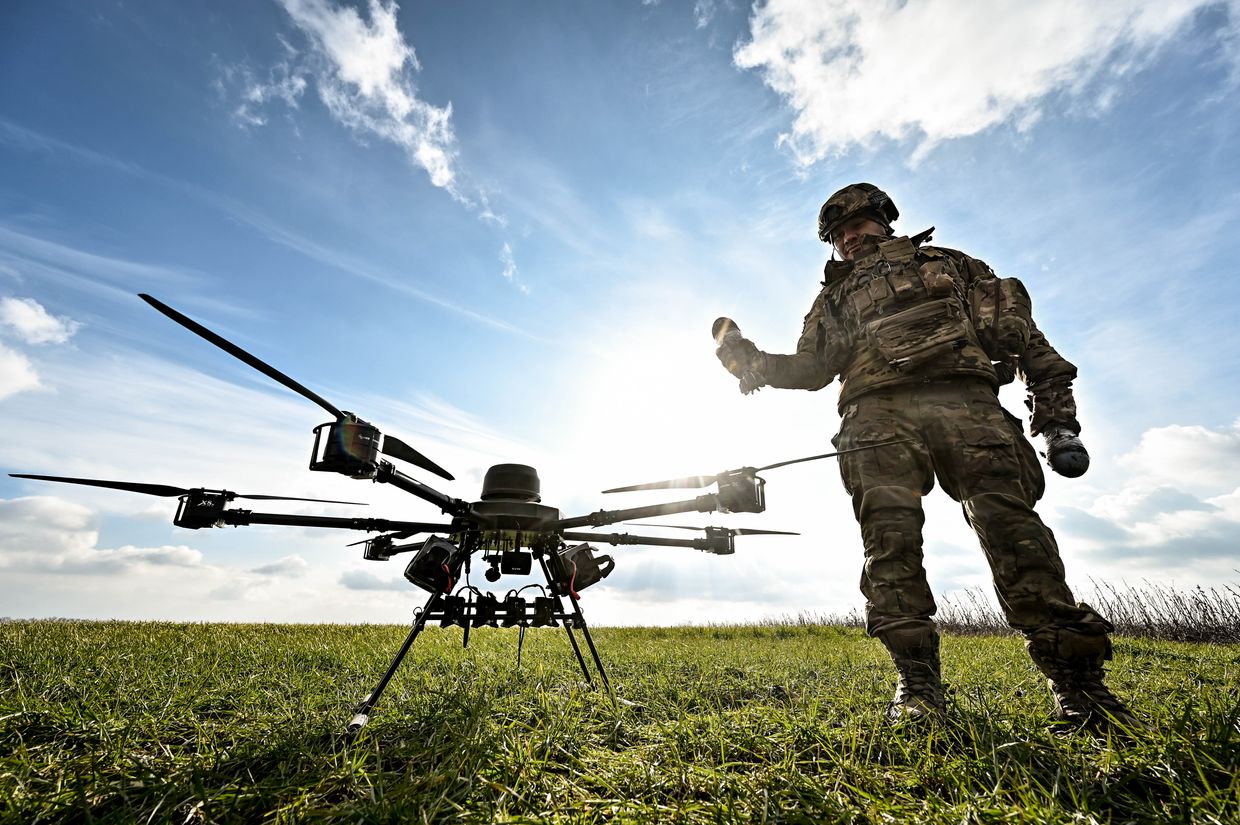The biggest weapons makers in the world convened in Washington, D.C. for the 70th meeting of the Association of the United States Army in early October. It was the third year in a row where Ukraine remained at the center of the event's enormous buzz.
Synchronized press releases ensued. Anduril, a heavy hitter among Silicon Valley’s new generation of miltech unicorns, put out a flurry of announcements touting its generalized “success in Ukraine” as a pitch for new drone systems that were receiving lucrative contracts with the U.S. Defense Department.
Western militaries are not shy about viewing Ukraine as a “laboratory” or “testing ground” for high-tech weapons. Given both the unprecedented use of drones in Ukraine and the novelty of the industry globally, U.S. manufacturers are keen to headline their work at the Ukrainian front line.
“You cannot field an American drone system today that doesn't have the moniker of ‘battle-tested in Ukraine’ on it. You can’t. Which is why everybody’s trying to do it,” says James Acuna, a 20-year CIA operations officer and former naval architect, currently consulting on drones from Estonia.
"You cannot field an American drone system today that doesn't have the moniker of ‘battle-tested in Ukraine’ on it."
A combination of Silicon Valley PR machines and military secrecy makes total impact tough to gauge, but reports indicate that Western drones have not been particularly helpful to Ukraine, proving weak in the face of Russian electronic warfare.
That has not stopped U.S. drone makers from constantly advertising product impact and C-suite man-hours logged in Ukraine as a pitch to better-heeled Western militaries, especially the U.S.
“Because you don't have success in Ukraine, you need to start embellishing, speaking half-truths. And it doesn’t matter, because nobody can fact-check,” Acuna says.
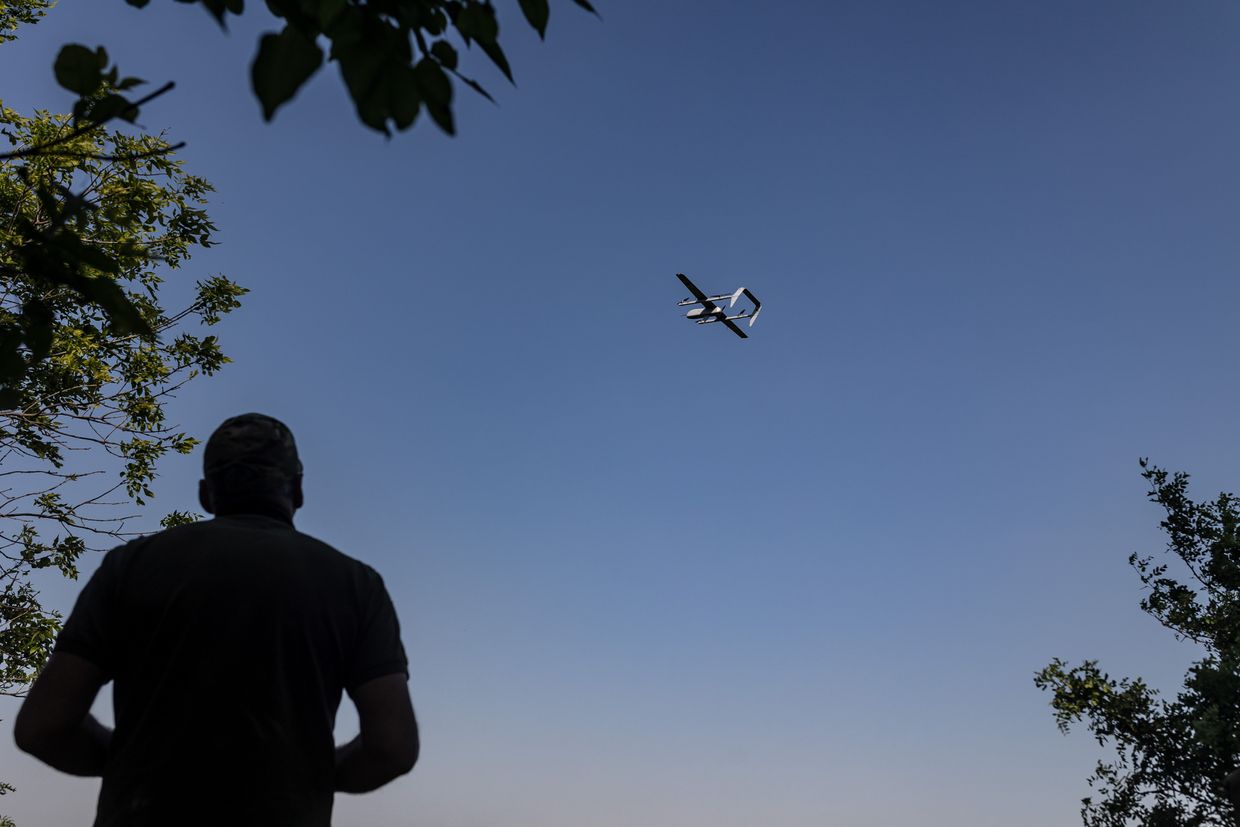
The Ukrainian government has accepted foreign-funded weapons packages including Western drones, but has shown little interest in buying the weapons as they are exorbitantly expensive compared to domestically-produced drones.
“My problem with some of these drone companies is they've been preaching about how much they've been helping Ukraine for years or whatever, and what they did is they sold the U.S. government a bunch of stuff, made a bunch of money, and didn't support the end users,” Bryan Sardoch told the Kyiv Independent from the AUSA conference. Sardoch is an American working for U.S-Ukrainian drone developer Bavovna.AI, which itself recently closed a $2.7 million seed round.
‘Battle-tested’
U.S. weapons producers have treated inclusion in arms packages to Ukraine as a form of field testing since the war’s outset. Performance in Ukraine “validates” production quality, as one Army officer put it.
But while testing in Ukraine intuitively implies battlefield use, there are shortcuts.
Remote fields across Ukraine have been designated as polyhony — testing sites which Ukrainians use to try out their own drones. A cottage industry has cropped up resembling “cruises” for new Western drone companies looking to say they’ve been tested in Ukraine, says Acuna.
“American companies will find — and I've butted heads with some of these people that offer this — They'll say oh, three days, 3,800 euros, including assistance with customs and getting your drones into Ukraine, providing a unit that will evaluate your systems, a driver, hotels, mostly in Zhytomyr Oblast,” says Acuna, referring wryly to a region some 70 miles west of Kyiv.
“It's a three-day package, 3,800 bucks, and inevitably, you get up-charged.”
Acuna says there is no comprehensive national certification for drone testing and a host of various letters of recommendation that units offer that are useless. He noted in particular claims that companies have passed “rigorous specifications that the Defense Ministry has established for drone operations,” or a similar standardized certifications.
“There's no gauntlet test that you do. Everything's informal, and everything is dependent on the unit or the brigade that you may talk to,” says Acuna.
Because of this systemic informality, it is impossible to say that a drone company has never been used at the front.
Unmanned and unconcerned
Since the war’s start, however, U.S. drone makers have fallen short, both in terms of the products delivered and their responsiveness to complaints from Ukrainian users.
“I got angry at how our stuff wasn’t working,” says Sardoch of the early days. He found himself in Ukraine at the start of Russia’s invasion trying to link Ukrainian soldier complaints with American drone companies, “fixing a lot of stupid stuff, honestly, with the American and U.K. drones that came over."
“There were a lot of issues with them both physically on the hardware or the software setup that were generally oversights.”
Ivan Kaunov, a drone pilot for the Ukrainian military turned developer of his own recon drones, recalls trying to hassle Western manufacturers about their equipment falling to Russian jammers two years ago only to be brushed off.
“They told me to tighten the antenna,” he recalls one condescending response to navigation failing in the face of Russian electronic warfare. “Western companies weren’t listening about GPS. Now everybody knows that you can’t use GPS (due to Russian EW).”
Those early issues have been the subject of prior reporting. Due to demand from the front that far surpassed foreign drone packages, Ukraine proceeded to build up its own drone industry massively.
Digital Transformation Minister Mikhaylo Fedorov recently wrote that 96% of the million drones to reach the frontlines in 2024 have been Ukrainian-made. The remainder are predominantly Chinese, with limited Western drones on the ground.
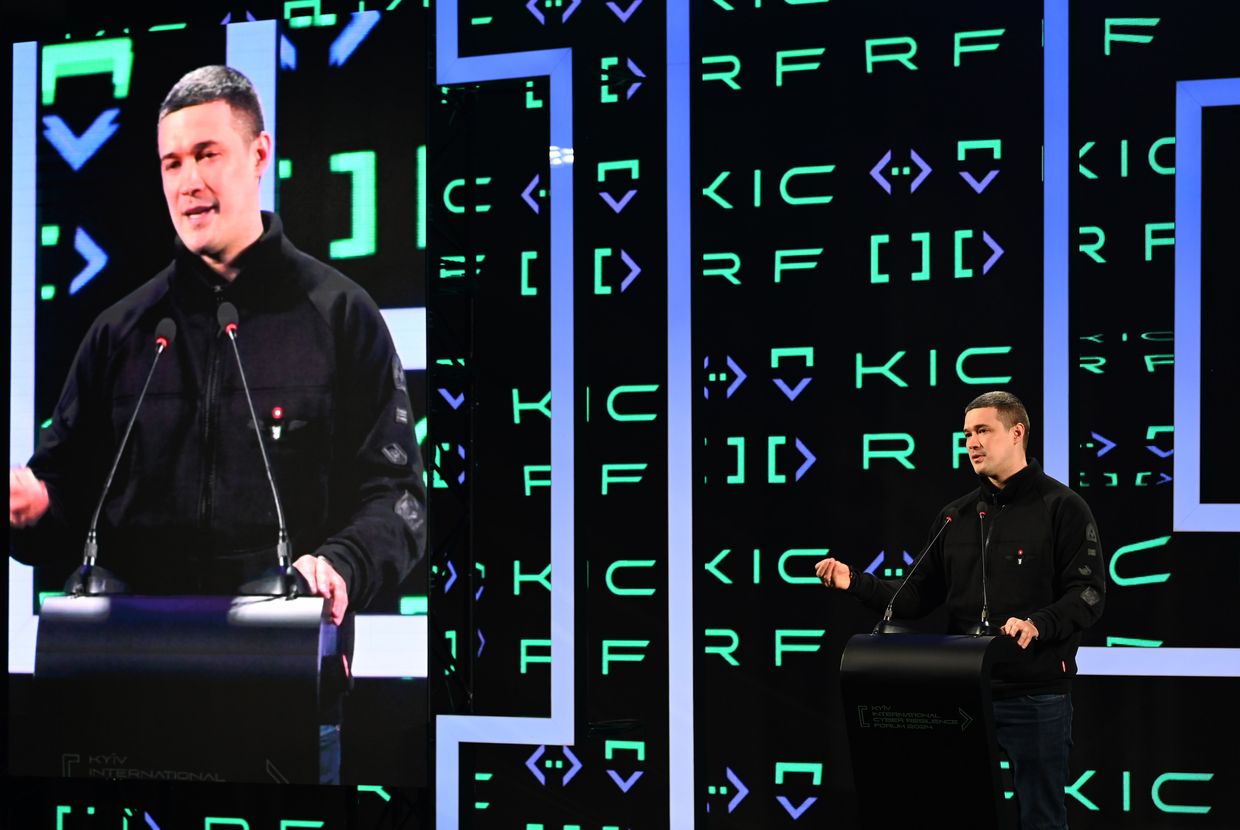
Some Western drone producers have had a documented presence. Aerovironment saw 700 of its highly portable Switchblade 300s sent to Ukraine as part of a U.S. defense package early in the war.
Aerovironment makes frequent mention of “lessons learned from the conflict in Ukraine” in announcements of sales to other countries. But the U.S. Army said it would no longer buy the Switchblade 300s a year after their first appearance in Ukraine, potentially due to limited success against Russian vehicles and their high cost.
Aerovironment’s newer 600s are better at taking out armor. Some have come to Ukraine but in quantities unknown. Russia has already downed and likely reverse-engineered them. The firm did not respond to multiple requests for clarification.
At the start of October, Aerovironment said it plans to start production of Switchblade 600s in Ukraine. But like a number of foreign weapons producers ranging from the U.S. Northrop Grumman to the Turkish Bayraktar setting up factories in Ukraine, those facilities aren’t necessarily going to be in production in time to provide weapons to Ukraine before President-elect Donald Trump takes office in January and a ceasefire deal is potentially negotiated.
Major factories take time to set up in the best of circumstances, let alone when Russian missiles and drones crisscross Ukrainian skies nightly in search of targets to blow up.
General Atomics, the maker of the $32 million Reaper drone, spent the duration of the 2023 counteroffensive trying to sell Ukraine two of those drones for a dollar in a marketing stunt that never resulted in those drones reaching Ukraine. The Wall Street Journal noted that it would cost $10 million to transport the two drones and another $8 million annually to maintain them.
The Ukrainian government recently requested Shield AI’s V-BAT drones — in a request for the U.S. government to pay for 200 of the $1 million apiece units that the Californian drone startup advertised heavily. It is indicative of the general trend: Ukraine does not pay for US drones. They’ll take them for free, but U.S. quality does not stack up to U.S. pricing relative to Ukrainian producers.
“Even with Skydio, like the X10, if you give it to me, it'd be great, we're definitely gonna do good things with it, but at the cost, I'd rather spend that money on several thousand of these smaller, cheaper, but still somewhat effective systems,” says Sardoch.
Founded in 2014, Skydio is likely the largest drone maker in the U.S. CEO Adam Bry appeared before Congress in June, mentioning Ukraine 65 times in his written remarks, making sure to introduce the country as “where I recently visited.”
“We’ve shared our findings with colleagues in the Defense Department, and the U.S. military has begun to field new capabilities we developed with feedback from Ukraine and other customers, including resilient communications features,” wrote Bry.
🇺🇦 We’re deeply honored to have the 𝗔𝗿𝗺𝗲𝗱 𝗙𝗼𝗿𝗰𝗲𝘀 𝗼𝗳 𝗨𝗸𝗿𝗮𝗶𝗻𝗲 senior officials tour Skydio HQ and our manufacturing facilities, and share their perspective with us on how drones are making a difference on the frontlines.
— Skydio (@SkydioHQ) November 4, 2024
From our experience serving incredible,… pic.twitter.com/gUnfQoj3HM
Bry continues to make appearances touting Ukraine as the future of defense — as well as Skydio’s eagerness to sell its drones to Ukraine. That is despite Skydio’s drones proving “not a very successful platform on the front lines,” as Bry admitted to the Wall Street Journal in April, as part of an investigation into the overall failures of U.S. drones in Ukraine.
In addition to heavy marketing from companies like Teledyne FLIR and Palantir, Acuna named two firms as the worst offenders of PR over substance in Ukraine: Skydio and Anduril.
Introducing official merch
from the Kyiv Independent
Flame of the West?
In the run-up to AUSA, Anduril announced a $250 million contract for 500 anti-drone “RoadRunner” drones to the U.S. Defense Department.
Two days later, Anduril announced the Bolt, a loitering surveillance drone that the firm says can also carry a munition. The product is up for a $250 million contract with the Marine Corps. The firm puts its cost in the low tens of thousands of dollars per unit.
“Anduril, as a venture startup, is a wonderful company, except they give too much credit to their PR guys that are just saying how successful they are in Ukraine and hoping that nobody really fact-checks them,” says Acuna.
“Ghost was an absolute failure — one of their tactical drone systems in Ukraine, this abject failure. To their credit, they came back with this Ghost X, which is fine, but then when that started failing, they just steered into the nonsense curve, as opposed to trying to fix it,” Acuna said of Anduril’s Ukraine marketing strategy.
In July, Anduril CEO Palmer Luckey told NPR that “Anduril has had hardware in Ukraine since the second week of the war,” for a story headlined “This U.S. company is helping arm Ukraine against Russia.”
Of five Ukrainian drone pilots and builders that the Kyiv Independent spoke with, none had seen an Anduril product on the front with Russia.
“This is the first time I’m hearing their name,” says Serhiy from his post in Vovchansk when asked about Anduril. Serhiy has been in the Ukrainian military for five years and started piloting drones just before Russia’s February 2022 full-scale invasion. “If they’re out here, it’s a couple of artificial test flights.”

“What’s flying today is almost all Ukrainian. Also, there are still a lot of Chinese drones,” says Serhiy, who is identified by first name only as Ukrainian servicemen are not authorized to speak to the press.
Anduril did not respond to multiple requests for comment.
Anduril’s long-time insistence that it is repatriating the best drones to the U.S. is an open question. Anduril’s new Bolt, for example, looks exactly like various models from DJI — the much cheaper Chinese drone maker whose commercial Mavics were the first drones to see widespread combat use in Ukraine.
Charles Johnson, a former far-right influencer, sometimes conspiracy theorist and more recently an investor in aerospace and defense companies like Clearview AI and Umbra Space, disparaged Anduril’s patriotism.
“Anduril has Chinese parts. In particular, they have a Chinese motor. They have failed in a lot of ways in Ukraine, but failure has been no deterrent for them and all the marketing around Ukraine,” Johnson tells the Kyiv Independent.
Johnson describes himself as “the first non-blood relation to invest in Anduril after Palmer Luckey’s mother, Julie Luckey,” an investment he claims he made at the behest of the U.S. government. He says he sold his stake back to Luckey in early 2023 as a response to the company’s work in Ukraine.
“The American Silicon Valley tech sector has more or less failed in Ukraine. And the DoD has more or less failed in Ukraine.”
Business Insider reported that Johnson recruited Peter Thiel — whose Founder’s Fund remains a major backer of Anduril — to become an FBI informant. A civil lawsuit recently alleged that Johnson has used his former ties to intel as the basis for an extortion scheme.
“A lot of the contractor class has deliberately made a real mess of this Ukraine conflict,” says Johnson, saying these contractors and the U.S. military benefit from a protracted war.
William Hartung of the anti-war Quincy Institute warned two years ago of “the larger push to exploit the war in Ukraine to jack up Pentagon spending for things that have nothing to do with defending Ukraine, or any likely future scenario.”
Market swarms
Despite limited use in Ukraine, Anduril has seen its valuation in private funding jump from $4.6 billion in June 2021 to $8.5 billion last December to $14 billion in August. Skydio’s valuation more than doubled in private investments between March 2021 and February 2023.
Unlike Anduril, Skydio and most other drone makers, Aerovironment is publicly traded. After a long slide throughout 2021, Aerovironment’s stock dipped below $60 in February 2022. Today, it is over $215.
Those valuations are the result of more than just marketing — they are also riding the tide of rising geopolitical tensions.
Upon its August fundraising round, Anduril wrote, "The conflict in Ukraine has exposed a critical vulnerability in the United States’ ability to respond to crisis. In a major conflict, use of weapons and munitions would quickly exceed supply — it is projected that the United States would run out of weapons in the first few weeks.”
The US federal lobbying of these companies is also telling. Per Senate disclosures, Skydio reported $100,000 in lobbying contracts per quarter at the end of 2021. That number grew to $170,000 by the present day, including the hiring of Joe Bartlett as director of federal policy. Bartlett previously served as national security advisor to Representative Elise Stepanik, now President elect Trump’s pick as UN ambassador.
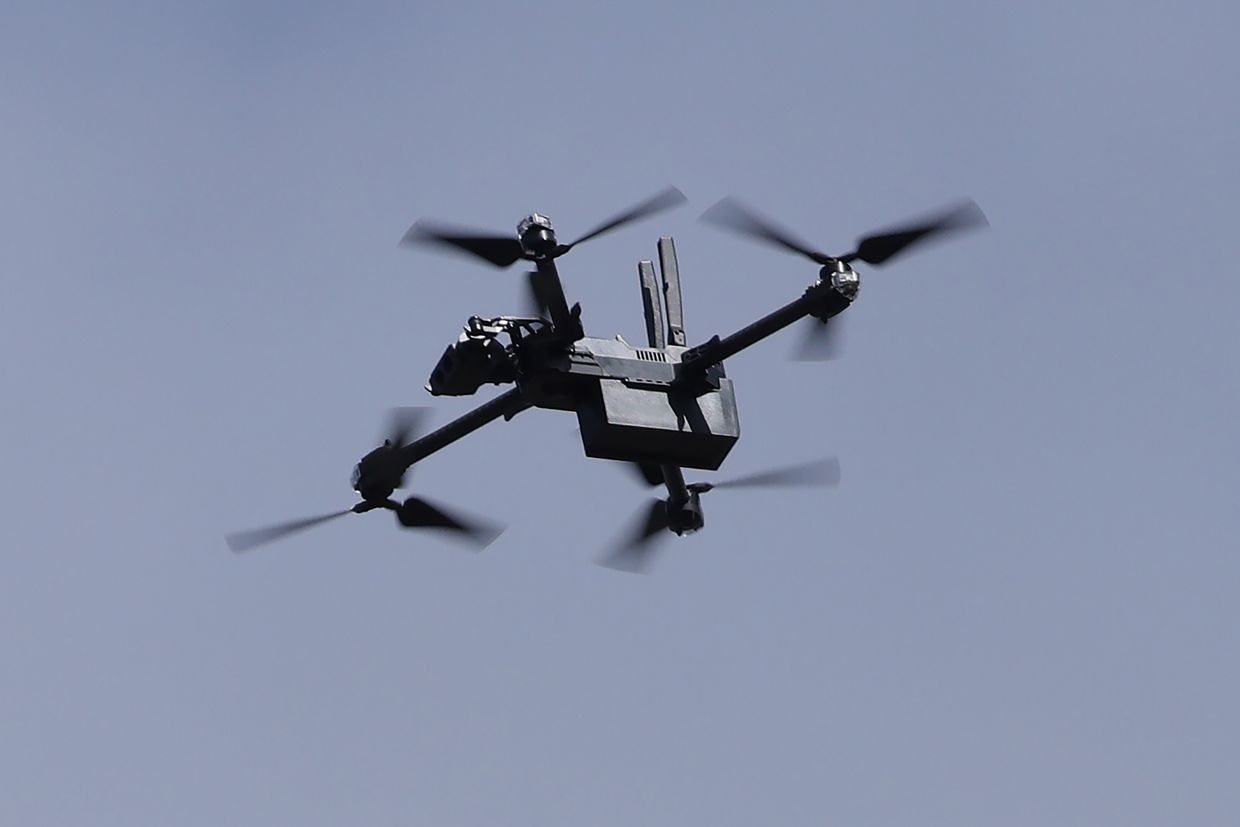
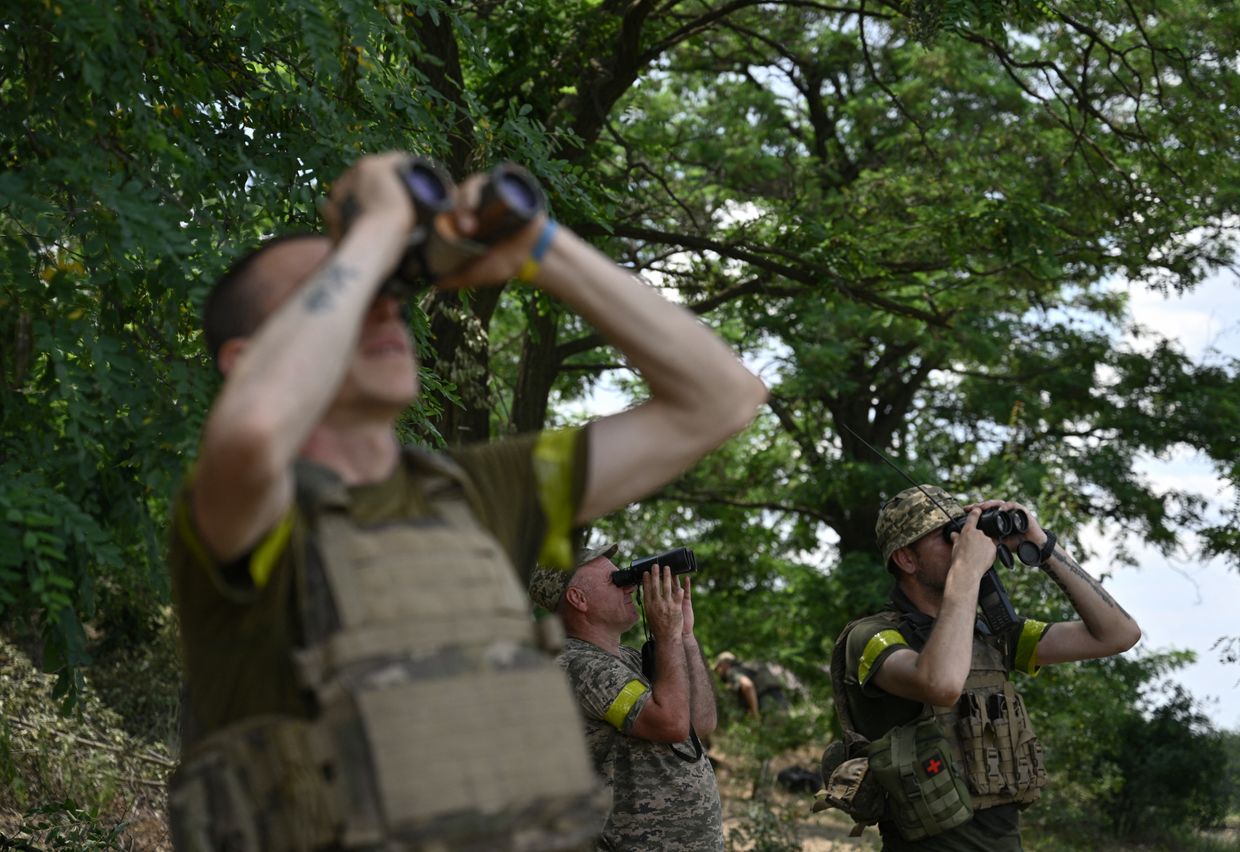
Aerovironment’s figures jumped from $40,000 a quarter to $230,000 the first quarter of 2024, though that figured has dropped to $130,000 since.
Anduril, meanwhile, dropped $210,000 on lobbying in Q4 2021. In Q3 2024, that number was up to $490,000.
The Lobbying Disclosure Act’s definitions of what qualifies as lobbying are surprisingly limited, so these figures are a low limit for these companies’ spending on government interactions.
“I hate to say that intent is important to me, but it is,” says Sardoch. “If you're testing (in Ukraine) in order to provide better products to Ukraine to mess Russia up a little better, great. If you're going in there to do that so that you can sell it to the South Koreans, saying ‘hey, this will help you defend your country, look, we went and tested it in Ukraine,’ using Ukraine as a tagline, or using Ukraine as an advertising tool, that's a problem.”
Acuna summarized U.S. drone makers’ intentions succinctly. “They do not offer competitive cost-effective solutions and they ain’t trying out for the Ukrainian team. They are looking to get DoD contracts.”
